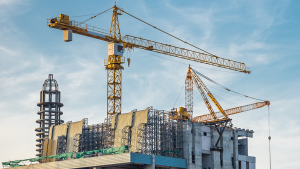Water leaks in condominiums are a major problem for all property managers. Pumps must continuously circulate hot water throughout the building and the flow is known to create pits on the inside of copper piping which eventually become pinholes. The entire hot water system can be replaced with new piping or epoxy pipe lining can be installed in the existing system.
Based on my 15 years of experience as a condominium property manager, water leaks are a major problem for all property managers. Of all the leaks that occur, more often than not, they are pinhole leaks in either a wall or ceiling pipe of the domestic hot water system.
In order to supply immediate hot water to all units within a condominium, pumps must continuously circulate hot water throughout the building. The flow of hot water is known to create ‘pits’ on the inside of copper piping. These pits eventually become pinholes and a water leak begins. Domestic cold water systems are not subject to the development of pinholes with the same frequency.
Eventually every domestic hot water system will develop pinholes, leak and thereby create damage. Should the leaks not be detected quickly, the damage can be costly.
The age of a building, thereby the age of the domestic hot water system, is only one of the indicators as to the possibility of pinhole leaks. Copper pipe can have a life span of up to 20 years, but it also has been known to develop pinholes in less than five years.
When a condo’s board of directors is faced with a high frequency of pinhole leaks and the resulting cost of repairs to pipes and property damage, they have two possible solutions. The entire hot water system can be replaced with new piping or epoxy pipe lining can be installed in the existing system. It is important to note at this point that the cost for either process is substantial and can run into several hundred thousand dollars. Building size will be a cost factor.
Replacement of pipes will involve some disruption within the building as well as considerable cost of repairing access points in ceilings and walls. Epoxy pipe lining is installed with minimal disruption to residents and little or no cost for repairs for access points. The condominium corporation deciding on epoxy pipe lining can incur substantial savings in time, money and disruption to residents.
New owners and newly elected members of the board of directors may have little or no knowledge of the cost of maintaining a building. However, what all owners expect is that everything works efficiently and works 24-7. The lights can always be turned on, the hot water is always hot and available at the turn of a tap. Maintaining this lifestyle can become very expensive as condominium buildings age. If the board of directors, appointed and supported by their owners, wish to insure this lifestyle and protect their investment, they may wish to look to alternative ways to maintain these essential services.
Recently, I visited a condominium site in the Greater Toronto Area and met with E. Rudy Petershofer, MBA, RCM, Vice President, Business Development for Rikos, Ltd., a company involved in pipe rehabilitation technologies. Petershofer and his team were installing epoxy pipe lining in the domestic hot water system of the building.
Rikos, with their non-destructive pipe rehabilitation concept, is providing one way in which this essential service of delivering hot water to all owner’s units can continue to be provided at a serious savings in cost maintenance. As Rikos Ltd. provides a 25-year warranty, it very much becomes an excellent alternative to new pipe installation. It should be also noted that for over 20-years Rikos Ltd. has specialized exclusively on high-rise domestic hot water recirculation systems and pipe lining.
It should be noted that in a 2006 study, the American Water Works Association Research Foundation concluded that a lining life of 40 to 60 years may be expected. The epoxy used by Rikos has a design life of 50 years. In Canada, a study in 2000 found that pipe lining was an innovative, cost-effective solution to rehabilitating existing, structurally sound pipe.
Thomas Marks is a former associate editor of the Daily Commercial News and is currently a candidate member of the Association of Condominium Managers of Ontario. Emails can be sent to editor@dailycommercialnews.com










Recent Comments
comments for this post are closed